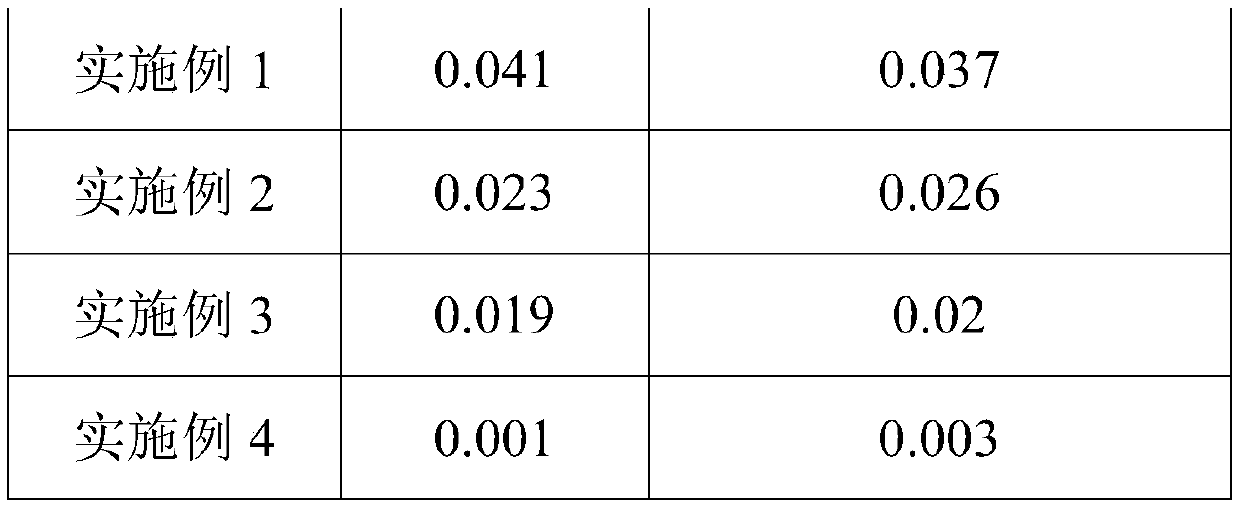Biological medicine wound dressing
A biomedicine and wound technology, applied in dressings, medical science, viscous dressings, etc., can solve the problems of ineffective release of medicinal ingredients, poor anti-inflammatory and disinfection effects, and unfavorable wound air permeability, so as to facilitate wound healing and effective Conducive to the protection of the environment and the effect of reducing the formation of scars
- Summary
- Abstract
- Description
- Claims
- Application Information
AI Technical Summary
Problems solved by technology
Method used
Image
Examples
Embodiment 1
[0043] The hydrophilic film drug layer is prepared by the following mass content ratio:
[0044] Chitosan content 10%, sulfamethoxazole content 1%, dexamethasone content 1%, borneol content 0.5%, safflower content 2%, trimethoprim content 1%, rifamycin content 1%, peppermint Brain 1%, Clindamycin Hydrochloride 13%, Nano Silver Particles 1%, Carboxyvinyl Polymer and / or Hydroxypropyl Methyl Cellulose 10%, Trehalose 1%, Carotenoids 1%, the solution prepared after the reaction, the solution is drip-coated on the polylactic acid layer, and dried to obtain a hydrophilic film drug layer;
[0045] Paste the dried polylactic acid receiving layer carrying the hydrophilic film drug layer on the water-absorbing layer, paste the water-absorbing layer on the base layer, and stick the adhesive layer on the edge of the base layer and the edge of the water-absorbing layer In between, prepare the dressing.
Embodiment 2
[0047] The hydrophilic film drug layer is prepared by the following mass content ratio:
[0048] Chitosan content 15%, sulfamethoxazole content 5%, dexamethasone content 5%, borneol content 2%, safflower content 3.5%, trimethoprim content 3%, rifamycin content 2.5%, mint content Brain content 2%, clindamycin hydrochloride content 3%, nano silver particle content 8%, carboxyvinyl polymer and / or hydroxypropyl methylcellulose content 35%, trehalose content 5%, carotenoid content 5%, the solution prepared after the reaction, the solution is drip-coated on the polylactic acid layer, and dried to obtain a hydrophilic film drug layer;
[0049] Paste the dried polylactic acid receiving layer carrying the hydrophilic film drug layer on the water-absorbing layer, paste the water-absorbing layer on the base layer, and stick the adhesive layer on the edge of the base layer and the edge of the water-absorbing layer In between, prepare the dressing.
Embodiment 3
[0051] The hydrophilic film drug layer is prepared by the following mass content ratio:
[0052] Chitosan content 13%, sulfamethoxazole content 3%, dexamethasone content 3%, borneol content 1.5%, safflower content 3%, trimethoprim content 2%, rifamycin content 1.5%, mint content Brain content 1.5%, clindamycin hydrochloride content 1.5%, nano silver particle content 4%, carboxyvinyl polymer and / or hydroxypropyl methylcellulose content 13%, trehalose content 3%, carotenoid content 3%, the solution prepared after the reaction, the solution is drip-coated on the polylactic acid layer, and dried to obtain a hydrophilic film drug layer;
[0053] Paste the dried polylactic acid receiving layer carrying the hydrophilic film drug layer on the water-absorbing layer, paste the water-absorbing layer on the base layer, and stick the adhesive layer on the edge of the base layer and the edge of the water-absorbing layer In between, prepare the dressing.
PUM
| Property | Measurement | Unit |
|---|---|---|
| Thickness | aaaaa | aaaaa |
Abstract
Description
Claims
Application Information
 Login to View More
Login to View More - R&D
- Intellectual Property
- Life Sciences
- Materials
- Tech Scout
- Unparalleled Data Quality
- Higher Quality Content
- 60% Fewer Hallucinations
Browse by: Latest US Patents, China's latest patents, Technical Efficacy Thesaurus, Application Domain, Technology Topic, Popular Technical Reports.
© 2025 PatSnap. All rights reserved.Legal|Privacy policy|Modern Slavery Act Transparency Statement|Sitemap|About US| Contact US: help@patsnap.com


